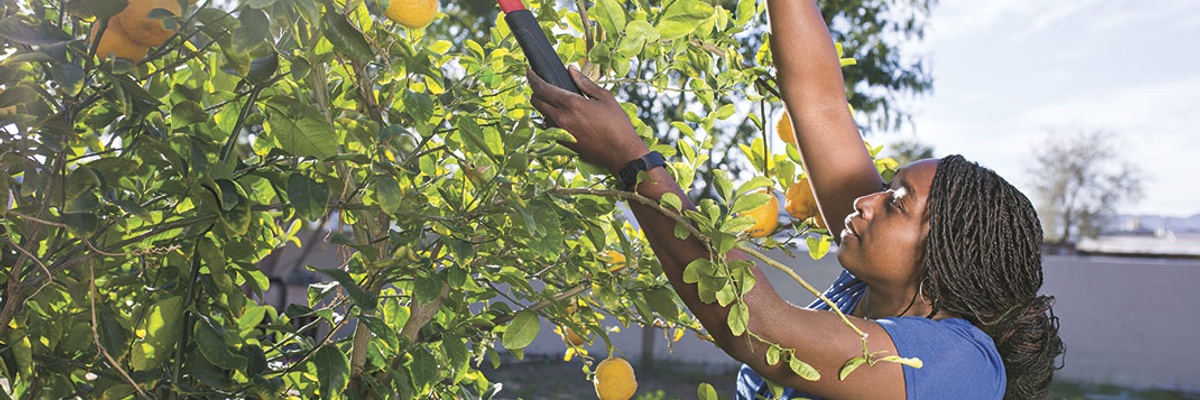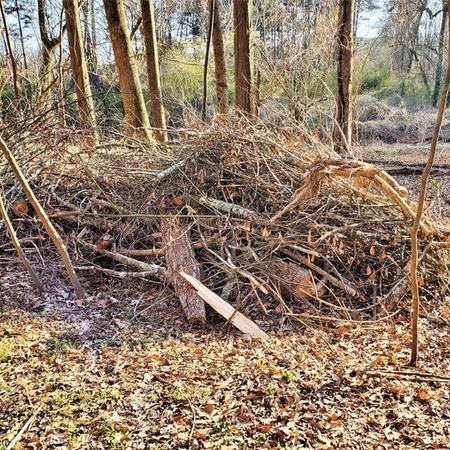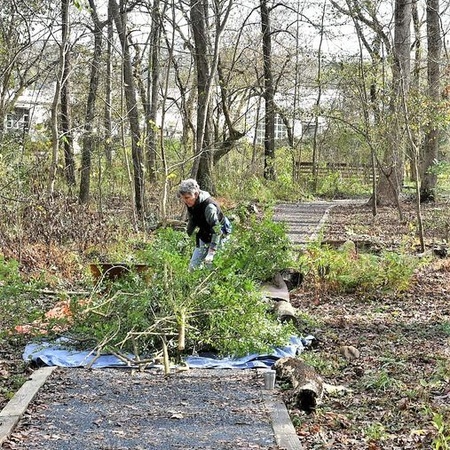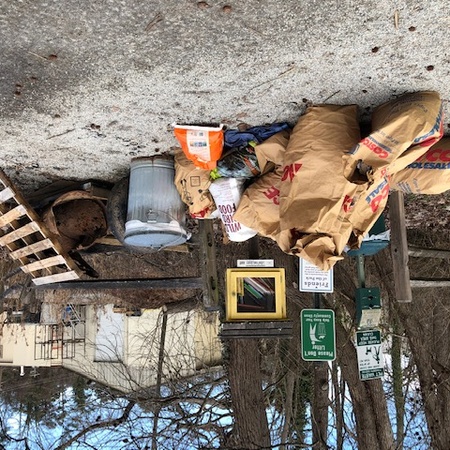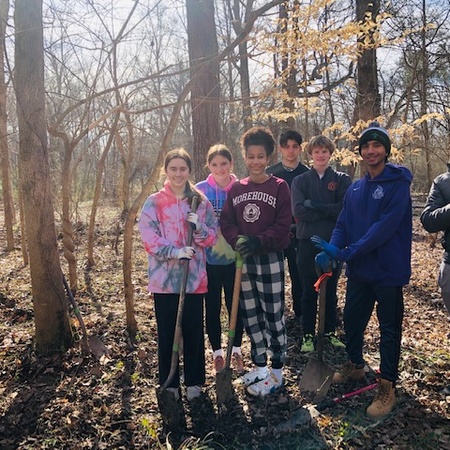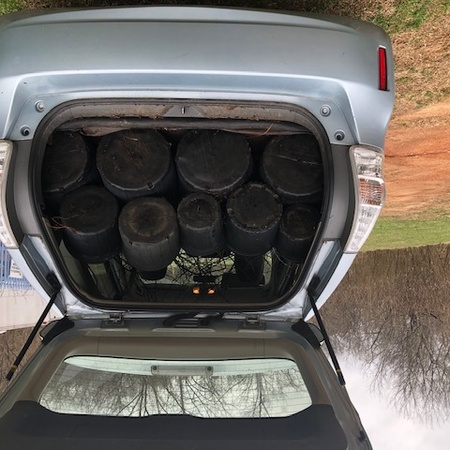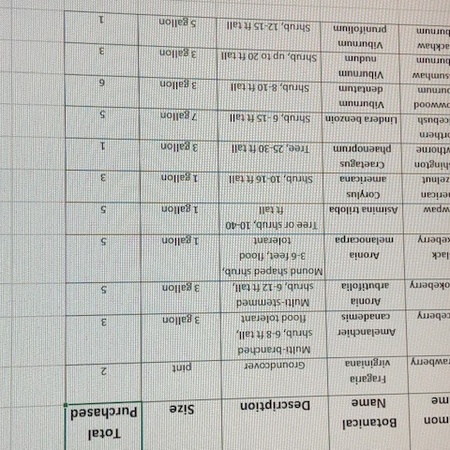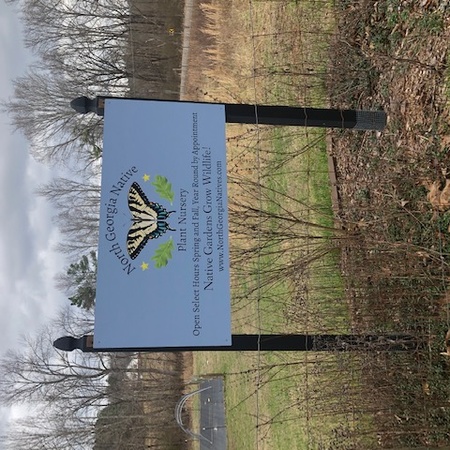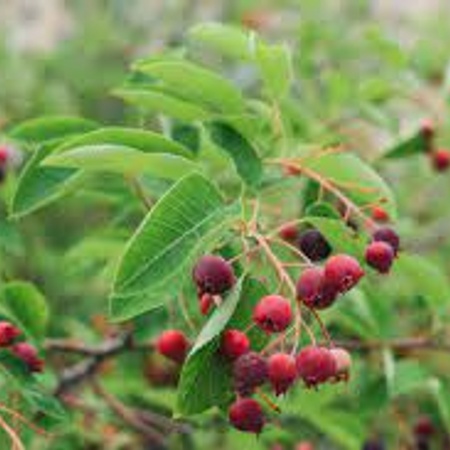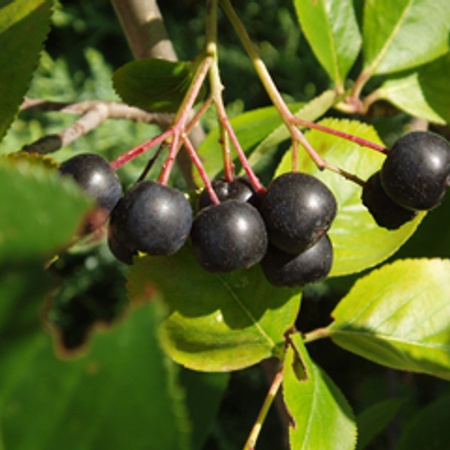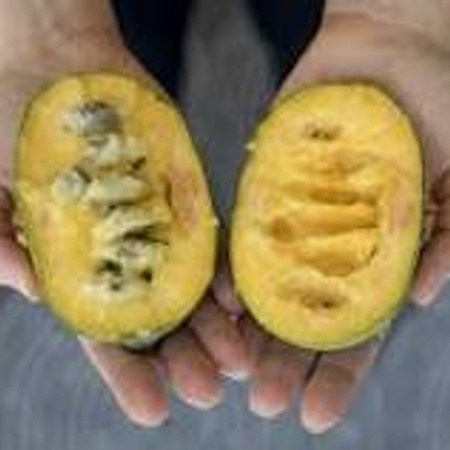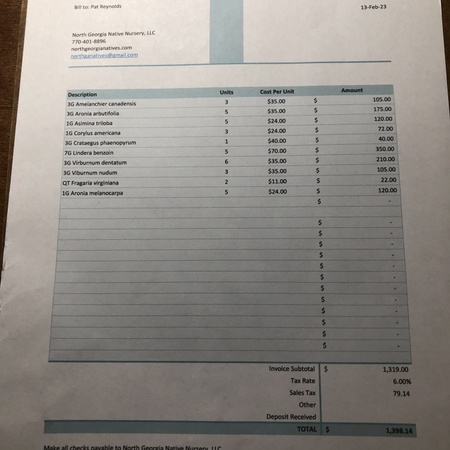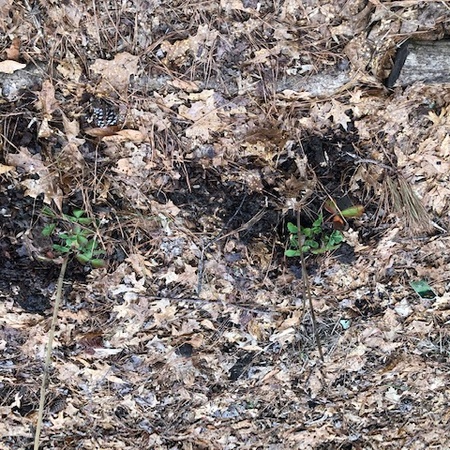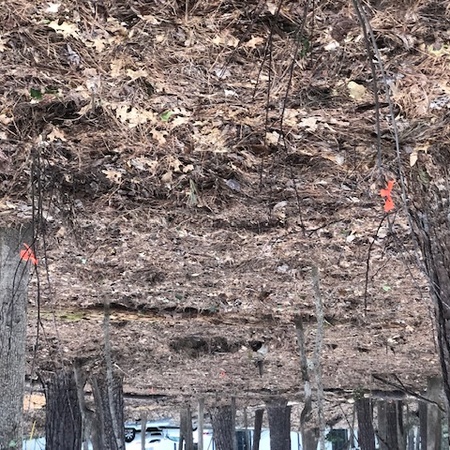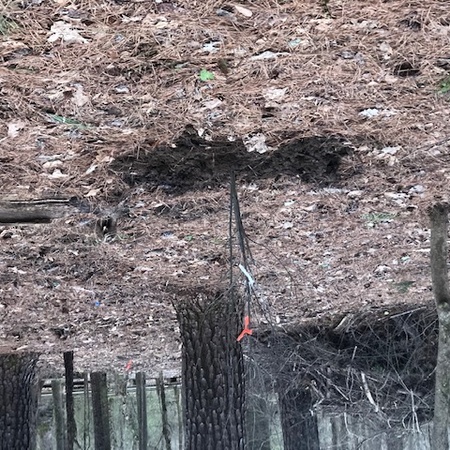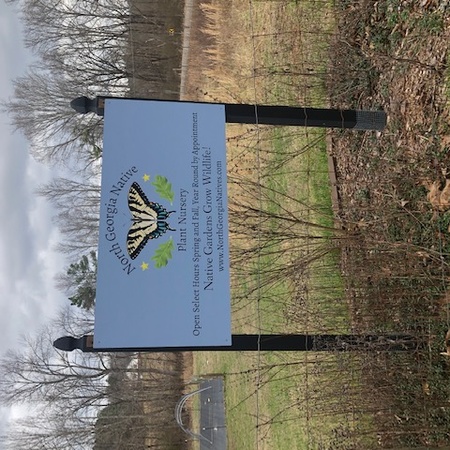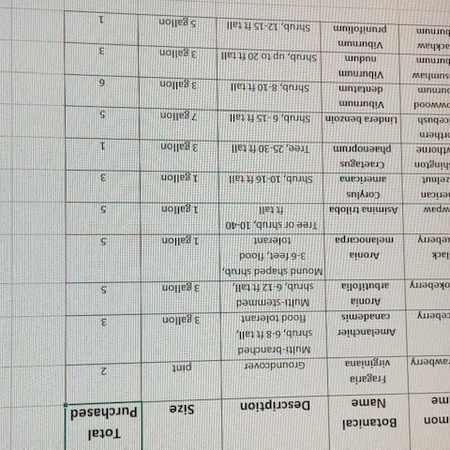The "Native Plant Orchard" project has had a huge impact on Zonolite Park. The majority of the native, edible plants were installed in an area at the back of the park which was unused and overrun with invasive plants like Chinese privet and English ivy.
Twice a month, volunteers harvested the invasive Chinese privet shrubs from the designated planting site, and Zoo Atlanta picked up to feed to giraffes, elephants, apes, and goats. The shrubs that Zoo Atlanta did not use were piled into brush piles which will provide wildlife with areas for nesting, resting, escape from predators, and protection from harsh weather conditions. Other volunteers hand pulled and bagged the invasive English ivy. New paths were made in the newly cleared areas which park visitors are using daily. Visitors say they feel safer now because the tall invasive shrubs have been removed which provides a clearer sight line through the remaining trees.
The newly planted natives will provide fruit, berries and nuts that park visitors will be able to forage. (For example in a few years visitors will be able to pick Pawpaw fruit which tastes like a banana.) Now there are eleven different species of edible plants for humans. Prior to the new plantings, there were zero edible plants in that area. Park visitors will be able to use the park's dedicated iNaturalist site to identify which plants are edible. Signs are posted in the park with the QRC code for the dedicated iNaturalist site.
In addition, these native plants will support birds (like Eastern Bluebirds, Northern Flicker, Gray Catbird, American Robin, Mockingbirds, Blue Jays, Cedar Waxwings, Wrens, Goldfinch, Titmice, Cardinals, Chickadees, and many more); are the host plants for butterflies and moths (like Spring Azure Butterfly, Coral Hairstreak, Large Lace Border Moth, Zebra Swallowtail, Pawpaw Sphinx, Orange-Tipped Oakworm Moth, Spicebush Swallowtail, Eastern Tiger Swallowtail Butterfly, Promethea Silk Moth, Brown Elfin Butterfly, Saddleback Caterpillar Moth, Spring Azures, Hummingbird Clearwing Moth, and many more); and are a pollinator plant for many insects.
The park is going to promote the newly installed edible plants on their Facebook page, and the InTown Chapter of the Georgia Native Plant Society will be having an "edible native plant workshop" in a couple months which will further educate the general public about edible native plants.
The future of the project will include monitoring and removing invasive plant regrowth in the area, adding additional edible plants (like Persimmons and Mulberries), and maintaining the paths through the woodlands planting areas.

